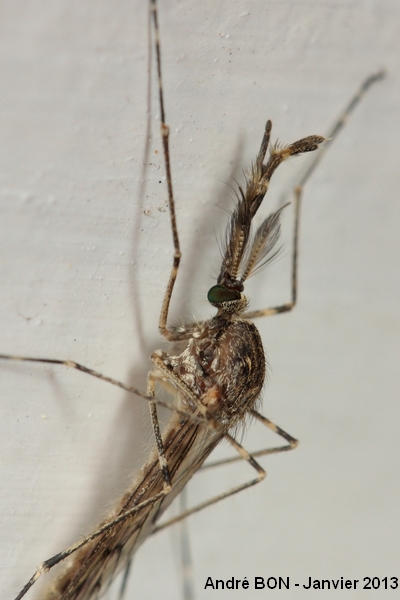

| Banded Mosquito (Culiseta annulata (Schrank, 1776)) |


|
|
Scientific name: Culiseta annulata (Schrank, 1776) Common name: Banded Mosquito French name: Cousin annelé Order: Diptera Family: Culicidae Wingspan : 10-13 mm. Biotope: Larvae grow in many different kinds of stagnant water, including small size and polluted water. Geographic area: Europe as far the most northern regions, North Africa, Asia Minor, Near East. This species is more common in the northern part of its range. It tends to be replaced by Culiseta longioreolata in the south where it is mainly observed at high altitudes. Observation period : All year round. There up to three broods per year. Adults emerging during late summer over winter inside buildings, caves or tree holes. |
Mosquitoes of the Culicinae sub-family, to which Culiseta annulata belongs, are used to landing with their body almost parallel to the support, the head generally oriented downwards, while those of the Anophelinae sub-family have a leaned forward resting position, the head being aligned with the body. The Banded Mosquito is a rather large size mosquito showing three small spots made of black scales on each wing at the junction of veins. It is a general dark grey brown colour. The legs are clearly banded with whitish colour. This is the origin of the species name. The fore edge of the abdominal tergites is whitish. You can recognize males with their feathery antennae. Females "bite" mammals or birds to suck the necessary blood needed for egg maturation. Males only feed on nectar. |
| [To know more about the Banded Mosquito] [Next picture] [Top] |

|
The large size, the spots on the wings, the banded legs and the observation date directly lead to the banded Mosquito species. |
| [To know more about the Banded Mosquito] [Previous picture] [Top] |

|
The feathery antennae indicate one male. So there is no risk to be bitten by this one. |